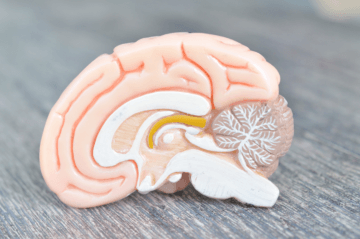From Kurzweil AI:
 I spent many years thinking about how to design an imaging study that could identify the unique features of the creative brain. Most of the human brain’s functions arise from the 6 layers of nerve cells and their dendrites embedded in its enormous surface area, called the cerebral cortex — which is compressed to a size small enough to be carried around on our shoulders through a process known as gyrification — essentially, producing lots of folds.
I spent many years thinking about how to design an imaging study that could identify the unique features of the creative brain. Most of the human brain’s functions arise from the 6 layers of nerve cells and their dendrites embedded in its enormous surface area, called the cerebral cortex — which is compressed to a size small enough to be carried around on our shoulders through a process known as gyrification — essentially, producing lots of folds.
Some regions of the brain are specialized, receiving sensory information from our eyes, ears, skin, mouth, or nose, or controlling our movements. We call these regions the primary visual, auditory, sensory, and motor cortices. They collect information from the world around us and execute our actions. But we would be helpless, and effectively non-human, if our brains consisted only of these regions.
But the most developed regions in the human brain are known as association cortices. These regions help us interpret and make use of the specialized info collected by the visual, auditory, sensory, and motor regions. For example, as you read these words on a page or a screen, they register as black lines on a white background in your primary visual cortex. If the process stopped at that point, you wouldn’t be reading at all.
To read, your brain, through miraculously complex processes that scientists are still figuring out, needs to forward those black letters on — so that meaning is attached to them, and then on to language ability in the brain, so that the words are connected to sentences, and on to associated memories and given richer meanings. These associated memories and meanings constitute a “verbal lexicon” — it can be accessed for reading, speaking, listening, and writing.
Each person’s lexicon is a bit different, even if the words are the same, because each person has different memories and meanings. One difference between a legendary playwright such as William Shakespeare and — for example — the typical stock broker, is the size and richness of his or her associations, and the complexity of other connections.
More here.
